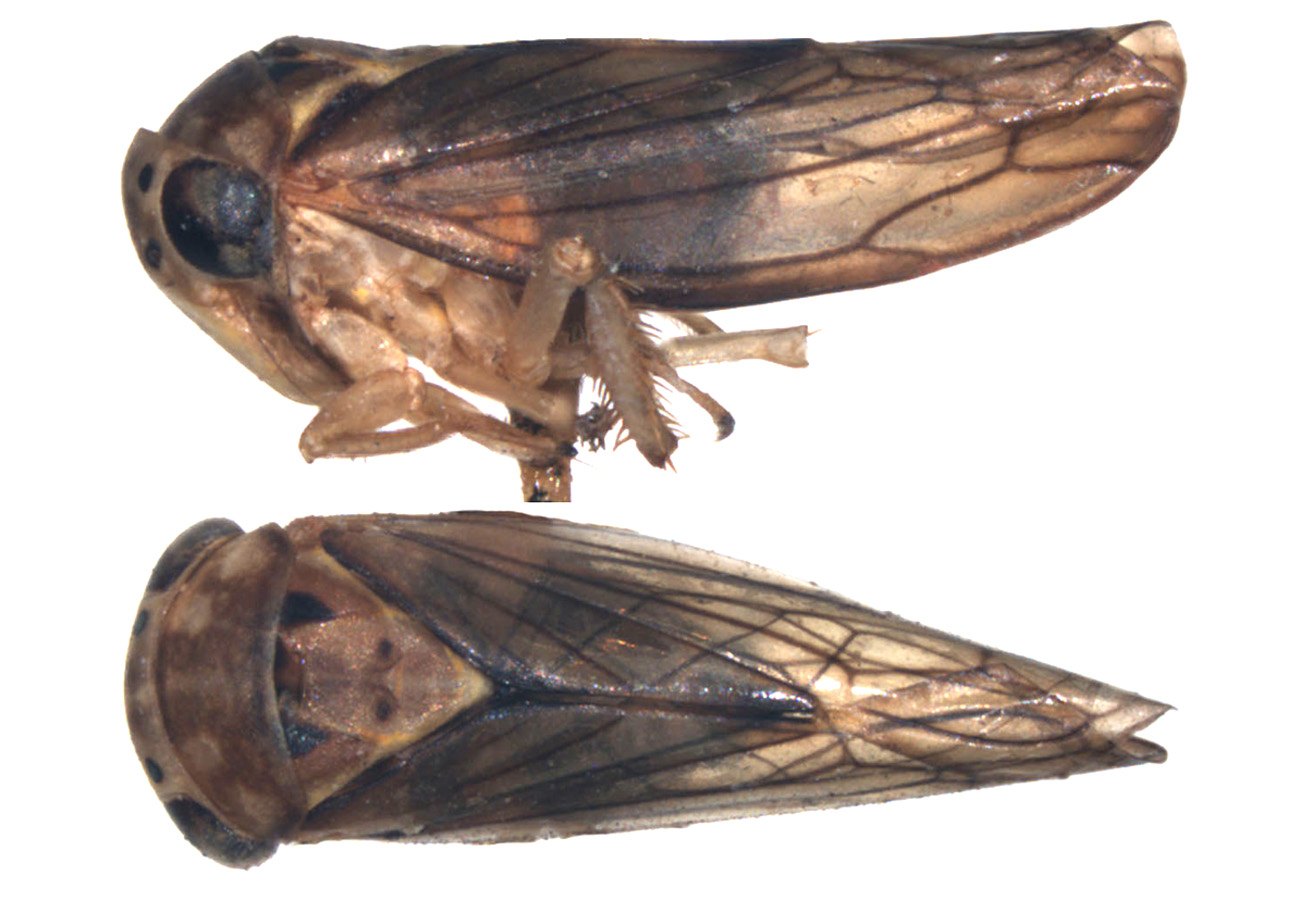Abstract
The relationships among and within the families that comprise the orthopteran superfamily Stenopelmatoidea (suborder Ensifera) remain poorly understood. We developed a phylogenetic hypothesis based on Bayesian analysis of two nuclear ribosomal and one mitochondrial gene for 118 individuals (84 de novo and 34 from GenBank). These included Gryllacrididae from North, Central, and South America, South Africa and Madagascar, Australia and Papua New Guinea; Stenopelmatidae from North and Central America and South Africa; Anostostomatidae from North and Central America, Papua New Guinea, New Zealand, Australia, and South Africa; members of the Australian endemic Cooloola (three species); and a representative of Lezina from the Middle East. We also included representatives of all other major ensiferan families: Prophalangopsidae, Rhaphidophoridae, Schizodactylidae, Tettigoniidae, Gryllidae, Gryllotalpidae and Myrmecophilidae and representatives of the suborder Caelifera as outgroups. Bayesian analyses of concatenated sequence data supported a clade of Stenopelmatoidea inclusive of all analyzed members of Gryllacrididae, Stenopelmatidae, Anostostomatidae, Lezina and Cooloola. We found Gryllacrididae worldwide to be monophyletic, while we did not recover a monophyletic Stenopelmatidae nor Anostostomatidae. Australian Cooloola clustered in a clade composed of Australian, New Zealand, and some (but not all) North American Anostostomatidae. Lezina was included in a clade of New World Anostostomatidae. Finally, we compiled and compared karyotypes and sound production characteristics for each supported group. Chromosome number, centromere position, drumming, and stridulation differed among some groups, but also show variation within groups. This preliminary trait information may contribute toward future studies of trait evolution. Despite greater taxon sampling within Stenopelmatoidea than previous efforts, some relationships among the families examined continue to remain elusive.
References
Brettschneider, H., Chimimba, C.T., Scholtz, C.H. & Bateman, P.W. (2007) Review of southern African Anostostomatidae (Orthoptera: Ensifera), with a key to genera. African Entomology, 15, 103–119.
https://doi.org/10.4001/1021-3589-15.1.103
Chappell, E.M., Trewick, S.A. & Morgan-Richards, M. (2012) Shape and sound reveal genetic cohesion not speciation in the New Zealand orthopteran, Hemiandrus pallitarsis, despite high mitochondrial DNA divergence. Biological Journal of the Linnean Society, 105, 169–186.
https://doi.org/10.1111/j.1095-8312.2011.01777.x
Field, L.H. (1993) Observations on stridulation, agonistic, and mating behavior of Hemideina ricta (Stenopelmatidae: Orthoptera), the rare Banks Peninsula weta. New Zealand Entomologist, 16, 68–74.
https://doi.org/10.1080/00779962.1993.9722653
Field, L.H. (2001) Stridulatory mechanisms and associated behaviour in New Zealand wetas. In: Field, L.H. (Ed.), The Biology of Wetas, King Crickets and Their Allies. CAB International, New York, New York, pp. 271–295.
https://doi.org/10.1079/9780851994086.0271
Field, L.H. & Bailey, W.J. (1997) Sound production in primitive Orthoptera from Western Australia: Sounds used in defence and social communication in Ametrus sp. and Hadrogryllacris sp. (Gryllacrididae: Orthoptera). Journal of Natural History, 31, 1127–1141.
https://doi.org/10.1080/00222939700770591
Field, L.H. & Jarman, T.H., 2001. Mating behaviour. In: Field, L.H. (Ed.), The Biology of Wetas, King Crickets and Their Allies. CAB International, New York, New York, pp. 317–332.
https://doi.org/10.1079/9780851994086.0317
Gwynne, D.T. (2001) Katydids and Bush-crickets. Reproductive Behaviour and Evolution of the Tettigoniidae. Cornell University Press, Ithaca, New York, 317 pp.
Gwynne, D.T. (2004) Reproductive behavior of ground weta (Orthoptera : Anostostomatidae): Drumming behavior, nuptial feeding, post-copulatory guarding and maternal care. Journal of the Kansas Entomological Society, 77, 414–428.
https://doi.org/10.2317/E-34.1
Hale, R.J. & Rentz, D.C.F. (2001) The Gryllacrididae: an overview of the world fauna with emphasis on Australian examples. In: Field, L.H. (Ed.), The Biology of Wetas, King Crickets and Their Allies. CAB International, New York, New York, pp. 95–110.
https://doi.org/10.1079/9780851994086.0095
Mason, J.B. (1961) Stridulatory mechanism in the family Schizodactylidae. EOS, 37, 505–508.
McVean, A. & Field, L.H. (1996) Communication by substratum vibration in the New Zealand tree weta, Hemideina femorata (Stenopelmatidae: Orthoptera). Journal of Zoology, 239, 101–122.
https://doi.org/10.1111/j.1469-7998.1996.tb05440.x
Monteith, G.B. & Field, L.H. (2001) Australian king crickets: distribution, habitats and biology (Orthoptera: Anostostomatidae). In: Field, L.H. (Ed.), The Biology of Wetas, King Crickets and Their Allies. CAB International, New York, New York, pp. 79–94.
https://doi.org/10.1079/9780851994086.0079
Picker, M.D., Griffiths, C. & Weaving, A. (2004) Field Guide to the Insects of South Africa. South Africa Struik Publishers, Cape Town.
Popov, G.B. (1984) Insects of Saudi Arabia. (Orthoptera: Fam. Stenopelmatidae and Gryllacrididae). In: Wittmer, W. & Buttiker, W. (Eds.), Fauna of Saudi Arabia. Ciba-Geigy Ltd., Basle, pp. 175-202.
Rentz, D.C.F. (1997) The world's most unusual gryllacridid (Orthoptera: Gryllacrididae). Journal of Orthoptera Research, 6, 57–68.
https://doi.org/10.2307/3503536
Rentz, D.C.F. & John, B. (1990) Studies in Australian Gryllacrididae: taxonomy, biology, ecology and cytology. Invertebrate Taxonomy, 3, 1053–1210.
https://doi.org/10.1071/IT9891053
Strauss, J. & Lakes-Harlan, R. (2010) Neuroanatomy of the complex tibial organ in the splay-footed cricket Comicus calcaris Irish 1986 (Orthoptera: Ensifera: Schizodactylidae). Journal of Comparative Neurology, 518, 4567–4580.
https://doi.org/10.1002/cne.22478
Stritih, N. & Čokl, A. (2012) Mating behaviour and vibratory signalling in non-hearing cave crickets reflect primitive comm-unication of Ensifera. PLoS One, 7(10): e47646. doi:10.1371/journal.pone.0047646.
https://doi.org/10.1371/journal.pone.0047646
Walker, T.J. (2017) Singing Insects of North America. Available from: http://entnemdept.ufl.edu/walker/buzz/s341a.htm
Walker, T.J. & Masaki, S. (1989) Natural History. In: Huber, F., Moore, T.E., Loher, W. (Eds). Cricket Behavior and Neurobiology. Cornell University Press, Ithaca, New York, pp. 1–42.
Weissman, D.B. (2001) Communication and reproductive behaviour in North American Jerusalem crickets (Stenopelmatus) (Orthoptera: Stenopelmatidae). In: Field, L.H. (Ed.), The Biology of Wetas, King Crickets and Their Allies. CAB International, New York, New York, pp. 351–375.
https://doi.org/10.1079/9780851994086.0351
Weissman, D.B. & Bazelet, C.S. (2013) Notes on southern Africa Jerusalem crickets (Orthoptera: Stenopelmatidae: Sia). Zootaxa, 3616, 49–60.
https://doi.org/10.11646/zootaxa.3616.1.4

